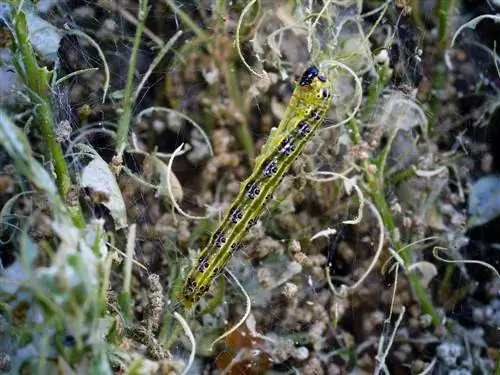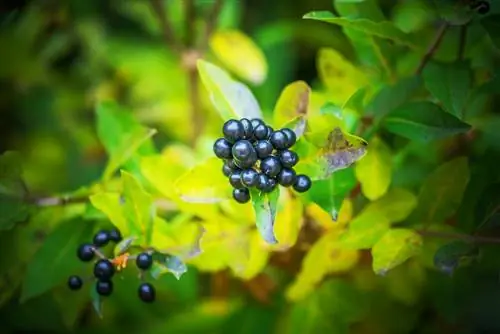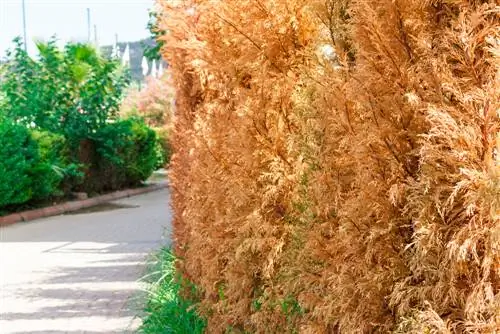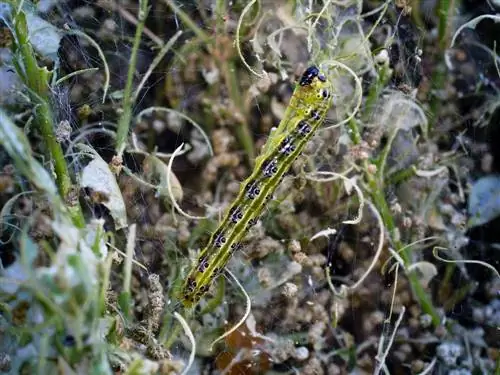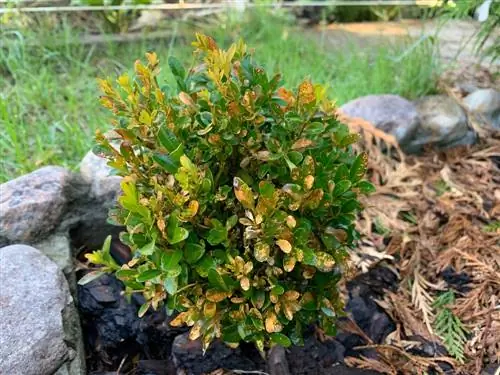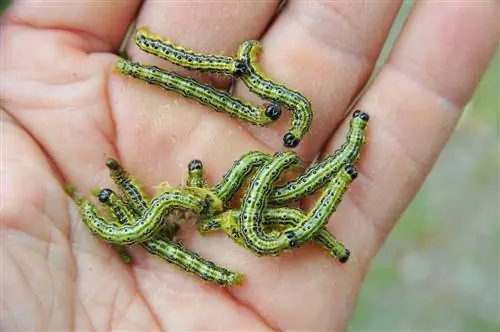- Author admin [email protected].
- Public 2023-12-16 16:46.
- Last modified 2025-06-01 06:02.
Until about ten years ago, the boxwood was considered an uncomplicated, easy-care and versatile tree that could be used in the garden. Since then, however, the once popular evergreen tree has been plagued by stubborn pests such as the box tree borer and difficult-to-control fungal diseases such as the notorious shoot dieback. This is what you can do to stop boxwood dieback.

What to do if the boxwood dies?
If the box tree dies, the box tree borer or the fungus Cylindrocladium buxicola may be the cause. Regular collection and biological control agents help against the borer, while preventative watering and suitable fungicides can be used against the fungus.
Effective measures against the box tree borer
In 2007, the boxwood moth, a small butterfly that immigrated from East Asia, appeared in Germany for the first time. The adult butterfly has so far only laid its eggs on the boxwood; the caterpillars that emerge from it in mid-March are initially only located inside the bush and from here eat the entire plant. Control is difficult because several generations develop each year and continue to infect the bushes even after successful treatment. To get rid of the caterpillars, you have to be persistent and keep taking the following measures:
- Collect caterpillars regularly from mid-March
- The animals become active at temperatures of around ten degrees Celsius
- at best, vacuum with a leaf blower, a high-pressure device or a vacuum cleaner
- Pull bushes apart and cut out webs
- Fight caterpillars biologically, for example with Bacillus thuringiensis or Steinernema carpocapsae
Above all, it is important to continually remove caterpillars and webs in order to prevent the development of adults and thus new generations.
Boxwood turns brown and dries up - you can still do that
If the leaves of the boxwood turn brown and entire shoots appear to be drying out, the fungus Cylindrocladium buxicola that is causing the shoot death is probably behind it. This is particularly noticeable when the leaves of the boxwood are practically “softened”, for example by incorrect watering or prolonged rain: the pathogen needs wet leaves in order to penetrate them. After infection, the fungus spreads rapidly at temperatures of 25 °C and more. You can prevent the disease by
- make sure that the leaves are not permanently wet
- the boxwood is in an airy location where moisture can dry out quickly
- The infestation pressure is also lower in sunny locations
- Do not water the boxwood from above, but only from below
- as a preventative measure, you can treat he althy plants with a suitable fungicide
- Duaxo Universal Mushroom-Free (€45.00 at Amazon) from Compo is suitable for this, for example
Tip
If the box is infected with shoot death, you should cut it back to the he althy wood and then treat it with the fungicide already mentioned. Plant residues and leaves should be swept up from the ground, and the top layer of soil should be removed and replaced with fresh substrate.

